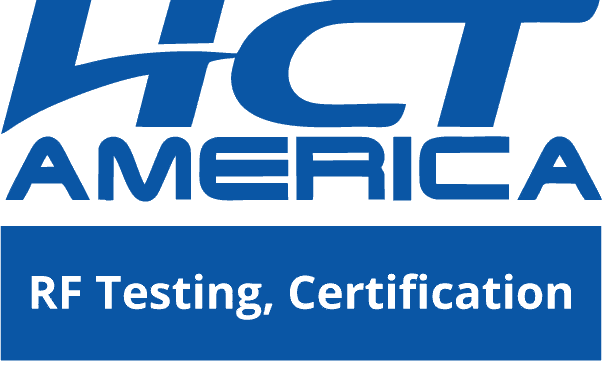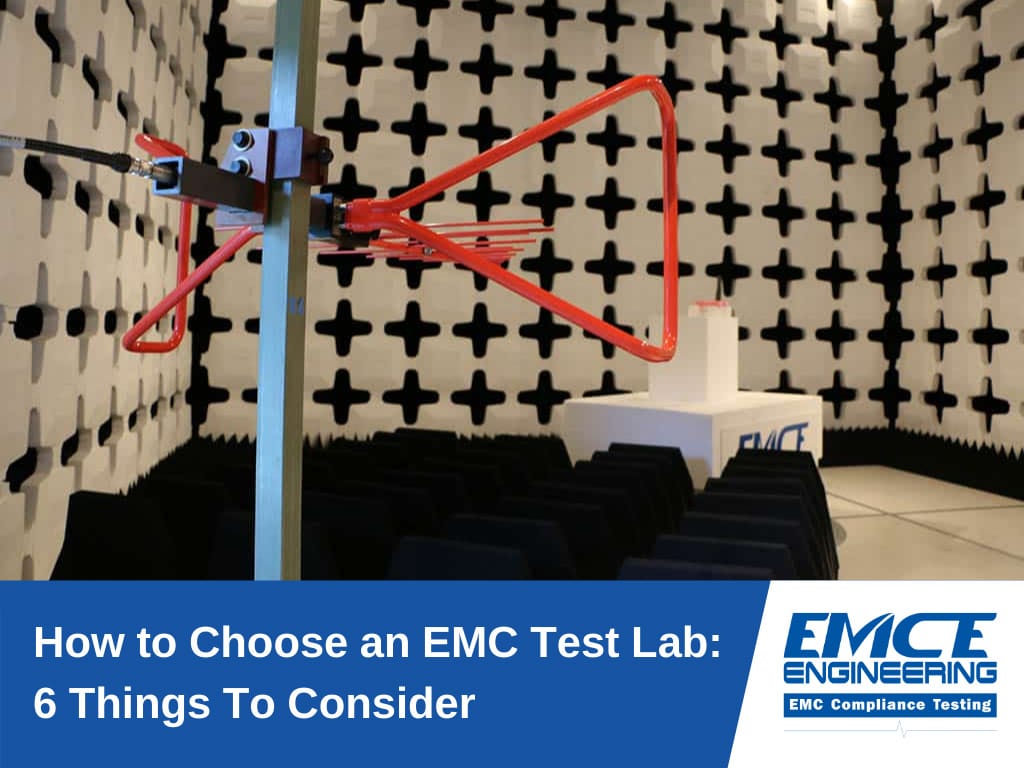10 Things Product Manufacturers Should Know To Prepare For Wireless Device Certification
As a product developer pursuing wireless device certification/s, negotiating global wireless standards and regulatory guidelines can be a daunting task. It is almost critical that experienced personal and resources are leveraged to engage a successful product certification strategy.
HCT America would like to share some useful information on wireless device certification:
It’s astounding how quickly wireless technology has been integrated into our lives. Within the last 5 years, consumers have become dependent on wireless technology. Wireless connectivity within products is now expected. We see all manner of wireless features integrated into consumer, commercial and industrial products. Devices are getting progressively smaller, more complex, and incorporating more transmitters into single devices.
As a product developer pursuing wireless device certification/s, negotiating global wireless standards and regulatory guidelines can be a daunting task. It is almost critical that experienced personal and resources are leveraged to engage a successful product certification strategy.
Community Education via TCB Review Associate Chris Harvey:
In order to facilitate public education and share our wireless product integration experience, HCT America has been cultivating the necessary resources. Stay tuned for seminars, webinars, and information offerings to educate the community on growing trends within the wireless industry.
Our Telecommunications Certification Body (TCB) team would like to remind everyone that Chris Harvey has been part of our TCB Review staff since day one. Chris Harvey has been a driving force in the TCB Industry since its inception in June of 2000, helping clients achieve RF Device Approvals.
His deep knowledge of FCC Rules and Procedures will serve to reinforce HCT America’s Certification Services Group in a fast-growing industry. His long history in the TCB Review process lends itself to a thorough understanding of complex certification issues relating to Licensed Products, RF Exposure, and the Pre-Approval Guidance process, previously known as “Permit But Ask.”
CISPR 25 Compliant ETS Lindgren 3 Meter Semi-Anechoic Chamber:
Don’t be afraid to ask questions. Make sure the Test Lab you’re using has all the appropriate know-how, accreditation, experience, and calibrated test equipment to perform all necessary services.
HCT America is pleased to announce an expansion of our RF Testing facilities. The addition of a CISPR 25 compliant ETS Lindgren 3 Meter Semi-Anechoic Chamber, as well as a 16’ x 12’ Screened Room, will increase test throughput and decrease project turnaround time. CISPR 25 compliance will accelerate HCT America’s growth into the rapidly expanding automotive testing sector.
The performance of this chamber is guaranteed to meet Normalized Site Attenuation (NSA) in accordance with ANSI C63.4 and is good for +/- 3.0dB performance from 30 MHz to 18 GHz. This allows for optimum accuracy regarding radiated emission measurements.
Certification Services Group General Manager Kent Kim:
When choosing a TCB service organization, make sure they have staff on board fluent in the international languages of the countries you are trying to pursue certifications in. This is especially important in an emerging market like wireless, where new standards are evolving to cover new technology.
Certification Services Group general manager Kent Kim has driven HCT America’s dominant position in the Korea RRA RF Approvals market.
Bilingual in Korean and English, Kent leverages his in-depth understanding of the RRA regulations and test procedures, to expedite RRA Approvals. With all testing being performed locally in our Fremont, CA facilities HCT America is able to offer both cost savings and a significantly reduced certification lead time for your Korea RRA Approval requirements.
10 Things Product Manufacturers Should Know To Prepare For Wireless Device Certification:
01> Question: How do you speed your project through the Testing and Certification processes? Answer: Remember the 3 “C’s.” Be prepared. By Completely describing the device and all its capabilities you can ensure that all device functions get Correctly tested. By ensuring that all documentation is correct and Consistent, errors in the application review process can be eliminated, thus ensuring a more speedy review and certification process.
02> Question: How should the client prepare any hardware for compliance testing? Answer: Are any special connectors needed, perhaps a test-jig to enable ease of connection/s. Will the product require any special power connections to avoid battery drain, can you provide extra batteries. Is special software needed to control and manipulate the RF parameters? Is any support equipment needed to operate and exercise the EUT (Equipment Under Test)?
03> Question: How many test samples should the client prepare? Answer: Multiple samples may be desired depending on the testing being performed. Having one sample setup for performing RF Conducted Tests is likely beneficial, and may be required. Check with the test lab to see if they will need samples with conducted RF connections.
04> Question: What concerns are there for manufacturers when using pre-approved Radio Modules? Answer: If not using the previous Modular Approval, there will be a need for detailed technical information for the module such as operational description, schematics, block diagrams, and tune-up information. There is a great benefit to leveraging the previous Modular Approval Certification.
05> Question: What kind of problems are typically encountered during wireless device compliance testing? Answer: During “Peak Power” measurements it may be necessary to adjust the output power of the transmitter to meet specification levels. When conducting “Occupied Bandwidth” measurements it may be necessary to adjust the output bandwidth of the transmission signal, during various modulation/s of the carrier frequency.
06> Question: Are there any special concerns where WLAN DFS testing is concerned? Answer: DFS testing is still in flux, requiring regular updates to the testing guidelines and procedures. Ensuring that the current requirements are understood and implemented in the device will eliminate many potential headaches during the test and Certification process.
07> Question: Will manufacturers need to update any product documentation/labels after RF certification is achieved? Answer: The preparation process of generating and gathering documentation can be performed in parallel to the testing so there should be no need to update the documentation after RF Device Certification is issued.
08> Question: Will product manufacturers need to provide test samples to regulatory government agencies at any time? Answer: There are times when certain devices will trigger a sample request by the regulatory agency, such as WLAN DFS Master devices. These requests are typically for devices for which the regulatory agency has great concern regarding compliance.
09> Question: After the approval process, exactly when can the client start shipping the product? Answer: Shipments can be initiated the moment the Certification is issued, so being prepared really can have a positive impact on getting product/s to market.
10> Question: What type of concerns should product manufacturers keep in mind after they have achieved radio device Certification / Approval from the FCC and/or any other Global regulatory agencies? Answer: The manufacturer is responsible to ensure the devices being marketed are representative of the tested device and continue to comply with the regulatory requirements.
To assist in measuring the continued compliance TCB’s operate a mandatory “Market Surveillance Process”. TCB’s are required to ask the applicant to provide a sample of the recently approved product. TCB service organizations must annually sample 5% of their Radio Approvals, and 1% of any product that required SAR testing. The applicant is required to provide a sample to the TCB within 30 days of sample request. After the grant has been issued, the manufacturer is responsible for making sure the product is manufactured and distributed in a way that maintains product consistency, in regard to RF (Radio Frequency) and SAR (Specific Absorption Rate) performance.
Article: Chris Harvey | HCTA
Editor: M. Danmole’
Image: HCTA






